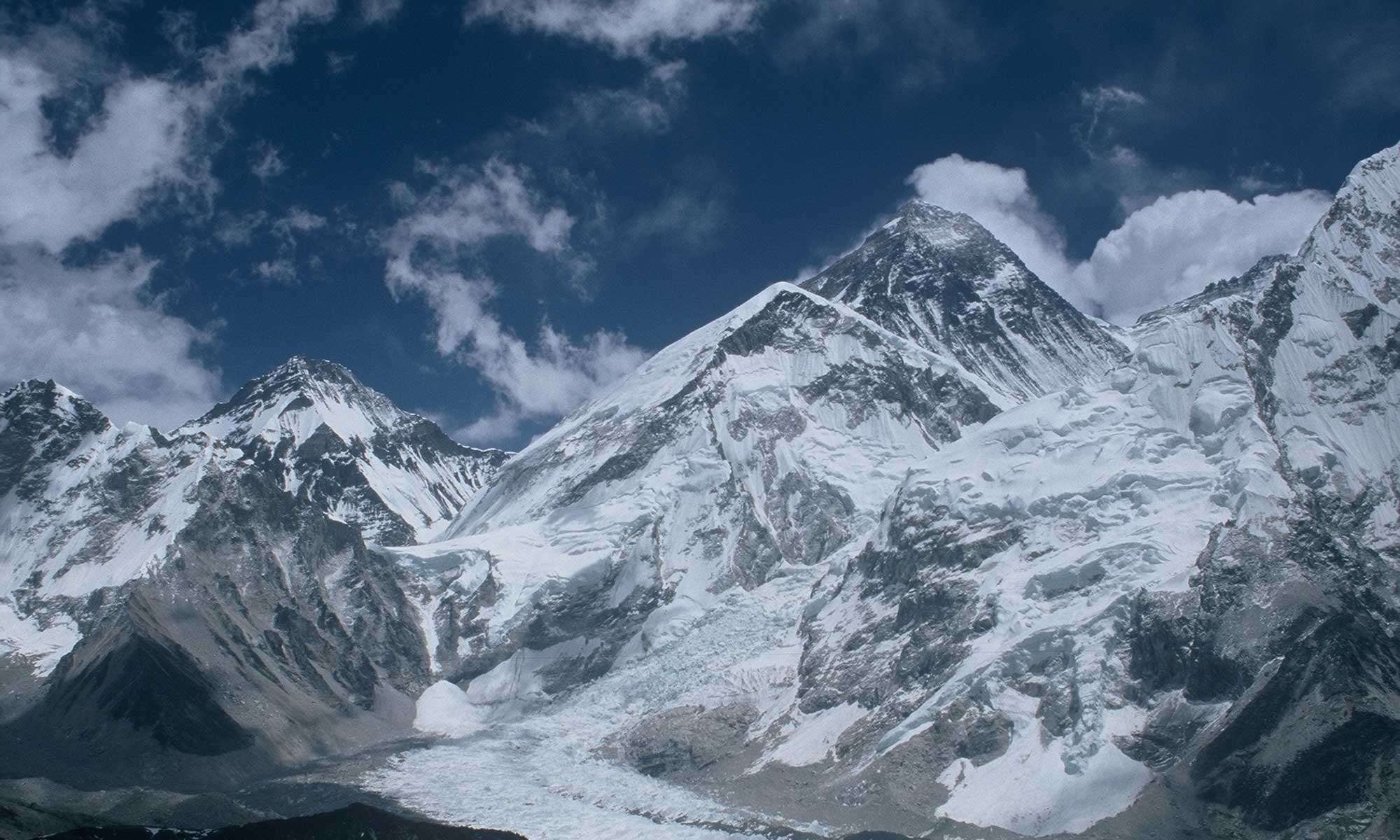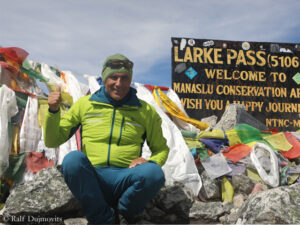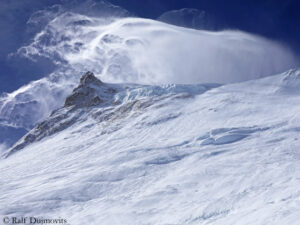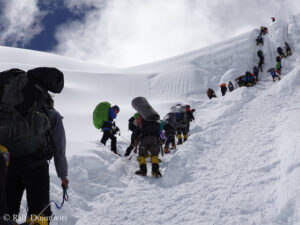Disappointed, sad, tired. This is how Ralf Dujmovits describes his emotional state after his failed expedition to the eight-thousander Manaslu in western Nepal. Disappointed because he had to abandon three summit attempts due to bad weather. Sad about the accidents on the mountain with dead and injured climbers. Tired because the descent in the highest avalanche danger is in his bones. “It has been hissing all day around. Here a crack, there a crack, big snow slabs were released. The descent day was a horror,” Germany’s most successful high-altitude mountaineer tells me after his return. “That’s why I’m still so knocked out.”
Focus hardly possible
Dujmovits did not come close to his goal of reaching the “True Summit” of Manaslu, the very highest point at 8,163 meters, without bottled oxygen. He did not get beyond Camp 4 at around 7,400 meters. “Of course, it pissed me off,” Ralf admits. “I had prepared myself really well physically. And then when you’ve invested so much time and effort, you’re disappointed and sad. But there was a lot else going on around it, which made it almost impossible for me to focus completely.”
For example, he said, two team members were flown out with dengue fever during the expedition. Then there were the avalanche accidents that killed Nepalese Anup Rai and Dawa Chhiring Sherpa and American ski mountaineer Hilaree Nelson, and injured dozens of climbers. “I’m not so hardened that it doesn’t get to me when Sherpas I’ve traveled with or know get injured or even die,” says the 60-year-old.
Never before on the front prong
Dujmovits says that the fact that several hundred mountaineers were on the eighth-highest mountain this fall season was “not that bad”. At the technically more difficult points, there was initially a buildup of traffic. Then, however, additional parallel fixed ropes were laid there, which could be used to escape. “In some cases, I overtook 20 to 30 people in such passages.”
About many summit aspirants Dujmovits can only shake his head. “I find it questionable with what attitude some go to the mountain. There were people who have never stood on the front prong of their crampons,” says Ralf. “To choose an eight-thousander to make the first attempt on the front prong, I feel is an impertinence towards the others. Moreover, there were people there who were far from being up to the mountain in terms of fitness.”
For example, he said, he watched an experienced Sherpa pull a lying Chinese client down a hilltop because she lacked the strength to walk. “Those were things that frustrated me. I asked myself: What are these people doing here? If you don’t have the minimal skills to go at a somewhat reasonable pace, you’re putting other people in danger. That’s just plain unreasonable. These people think only of themselves. I have no understanding whatsoever of their selfishness.”
Ten in a two-man tent
As Dujmovits waited at Camp 4 with two teammates for the strong wind to calm down, the zipper of the tent was suddenly opened. “Four people with bottled oxygen just sat down in the vestibule. A little later, the tent also opened on the other side, and three more joined them. There were suddenly ten of us in a two-man tent.” Sirbaz Khan, a Pakistani climber, reported to him that as many as 15 people crowded into his tent.
Many had wanted to climb directly to the summit from Camp 3 – with bottled oxygen, without a tent – but were stopped by the wind. “Then they just get into other people’s tents. You can’t say, ‘No, you stay outside!’ when it’s blowing 50 kilometers per hour there and it’s minus 20 degrees or colder,” Ralf says. “But things like that just don’t work. I have to be self-sufficient on the mountain. That self-reliance is lost on almost everyone up there.” Many now have not one, but two or more Sherpas at their side, he says.
Dujmovits does not hide the fact that he himself was supported by a Sherpa of the Imagine Nepal team: first by Tashi Sherpa, until he was injured in the avalanche on 26 September, then by Angdu Sherpa. Both did their jobs very well, he says. “In the past, I would never have imagined it, but as a 60-year-old, who is not as fresh as a daisy, I really appreciated it,” Ralf admits. “I had someone who was able to adjust to my pace. He would have been there if anything happened. Either I would have pulled him or he would have pulled me out of a crevasse. And he carried a lot of my luggage.”
More than four kilometers of fixed ropes
From the so-called “Crampon Point” at around 5100 meters – the place where the crampons were put on – to the summit plateau, the route was almost completely secured with fixed ropes, he says. “I estimate that four to five kilometers of ropes were laid all the way up to Camp 4.” Dujmovits says he is skeptical that the ropes will be completely removed after the season.
However, the German climber was generally satisfied with the waste management on Manaslu. “There has been some improvement compared to previous years,” Ralf says. “For example, I looked at the camp of Furtenbach Adventures (Austrian expedition operator) after the team had left. You didn’t see anything there anymore. Everything was in order.”
No heli-doping
What has also changed compared to the past is the use of helicopters. “At the base camp, there was continuous flight operation in good weather,” Dujmovits reports. “At the two landing sites, there were sometimes four to five helicopters in use to take people to or from base camp.”
At least there was no “heli-doping”, Ralf says. “I didn’t experience people being flown to Camp 1 or 2.” Above base camp, he says, helicopters were used only for rescue missions. “At high camp at 6,600 meters, some of us sat in the tents and held them down so the tents wouldn’t fly away due to the air turbulence from the rotors.”
In contrast to the expedition, the return trip to Germany went completely smoothly. Four days after his failed summit attempt, Ralf Dujmovits was already sitting back in his house in the town of Bühl on the edge of the Black Forest. Now it’s time for him to regain his strength – and to come to terms with what he experienced on Manaslu, says Ralf: “I first have to let it sink in.”






